You talk to your dog all the time. They greet you at the door when you come home, and you happily reply. When they yap at the mail carrier, you scold them. And when they get a blanket stuck on their head, you laugh and tell them how precious they are. But your beloved pup may not always understand what you’re saying. (Which is why they continue to bark at the poor mail carrier) When you start butting heads, it’s time to consider a training regime. And dog training books are one of the best resources you have available to properly explain how to communicate with your four-legged friend.
Types of Training
Training comes in a lot of different forms. Owners that bring home new puppies usually want to start with potty training to avoid potential accidents. And the possibilities open up from there:
- Agility: Active and intelligent pups benefit from learning agility courses
- Behavior: If dogs develop unwanted behaviors – such as excessive barking – you can work to correct them in a positive manner
- Obedience: You want your pup to follow instructions, especially in potentially dangerous situations
- Tracking: Like Agility, Tracking gives your dog a fun competition to participate in
Why Dog Training Books?
Of course, training options are usually available as hands-on courses somewhere (or even online). So why would you bother with dog training books?
Most courses have a set number of sessions with a specific time limit for each class. You’re given a syllabus of what your dog will learn, and you need to stick to the instructor’s plan – whether your dog cooperates or not. And if the two of you struggle? It usually means extra money for one-on-one time.
Online, you need to hit pause to follow the instructions. Then you have to restart the video. And if something doesn’t go as planned? You have to go back to the beginning. It’s not a smooth process.
Dog training books allow YOU to decide what tricks or tasks to work on. And you can take as long as you and your dog need. When you’re ready to move to the next step, you do. You have more freedom with time and additional hints in the pages you may not get in a formal class.
Training Tips
The best dog training books utilize positive reinforcement. Your dog receives a treat or rewards each time they complete a task, usually paired with a clicker. The reward system encourages your pup to participate. (If someone offers you chocolate, odds are you’ll finish that report)
And while it’s exciting to see results from training sessions, you want to keep things short. Training sessions should stay around 10-15 minutes. First, you don’t want to stuff your kiddo with treats. Second, even the most eager dog WILL tire eventually. Keeping training fresh will help you ensure success.
The earlier you start training, the better. This applies to adult canines, too. Remember, a yummy reward goes a long way to establishing a healthy bond. So don’t wait to get started.
At the same time, think about what you’re asking your pup to do. A puppy isn’t going to master an agility course. Get them to “sit” first.
Choosing a Dog Training Book
You can find training information pretty much anywhere. People consider themselves experts and post YouTube videos. But do they have any REAL credentials? Probably not. That’s where dog training books come in. But you still want to do some homework before first. Not every dog training book is created equal. Take a look at these important details:
- Publication Date: Older isn’t necessarily bad. Some training techniques remain valid today. That said, recent publications have newer information on dog psychology and fresher techniques. You may want both.
- Author Credibility: Is the author a celebrity? Or do they have professional training under their belt? You want someone who knows what they’re talking about. This means you want to skip someone who can only claim 1 million people love their Instagram feed.
- Readability: There are amazing dog training books out there – written for dog trainers. They use terminology you may not understand. If the book’s going to confuse you, it’s not going to help. You want something with images and clear writing.
- Purpose: What kind of training are you interested in? Look for that. And don’t discount a puppy book! Those same techniques work on older dogs who’ve never received training before.
- Endorsements: This goes back to your author. Who reviewed the book? Behaviorists and trainers? Or other celebrities? You want professionals, not influencers.
Skim the Dog Training Books
The best thing you can do when you look for a dog training book is flip through the pages. Even on Amazon, you have the ability to look through a sneak preview. It gives you a chance to get a feel for everything.
Can you understand the author? Is the language comfortable? Do you understand the way they write? Or are you struggling to figure out what they’re getting at?
Do you see clear diagrams and images? Is it giving you an idea of what you’ll need to do? Can you see yourself replicating the technique at home? Or are you more confused? (Not every picture is worth a thousand words; some are worth about half a word)
Take the time to peek and see what you think. You’ll appreciate the extra work.
The Best Dog Training Books
Do we live in a technological age? Yes, of course, we do. But the written word isn’t dead. And you can always get the digital version of dog training books if you want. (Be careful outside!) Having the chance to slow down, work through a trick or piece of obedience at your pace is priceless. You don’t feel pressured to meet a deadline, and your dog won’t feel anxious over needing to perform. Dog training books also help anxious rescues work on socialization and obedience in their new home – where they feel safe and comfortable. It’s a perfect answer to a potentially difficult situation.
The Best Puppy Dog Training Books
Most owners start training when their pups are in the clumsy puppy stage. It makes sense: you want to start as young as possible. And since puppies are easily distracted, working away from OTHER puppies makes sense. So a puppy training book allows you to set up a class in the comfort of your home. You can start with the basics of housebreaking and work your way up through obedience. These books lay the groundwork to get you comfortable with positive reinforcement. Where you go from there is up to you!
The Art of Raising a Puppy comes from the Monks of New Skete. This community of monks lives in Cambridge, New York. They developed a strong relationship with German Shepherds after receiving their first – Kyr – during the early days of the monastery’s formation. What followed was the development of a breeding line and a unique training method. In this puppy training book, they provide 352 pages of their expertise from the past 30 years. They cover all of a puppy’s growth stages, with plenty of advice you can turn to at any point.
Downsides? The monks do have more of a focus on dominance training. It’s not very positive-forward. This isn’t how most people feel comfortable training their puppies – or dogs, for that matter. And while the monks have 30 years under their belt, they aren’t certified trainers.
The Good
- Authors: Monks of New Skete
- Covers all growth stages of a puppy
- Revised edition
The Bad
- Authors aren't certified trainers
- Not positive reinforcement focused
Perfect Puppy in 7 Days sounds amazing – but it may not be the most realistic title in the world. Dr. Sophia Yin DOES help you out by walking you through all of the basics of puppy training, though. You get helpful pictures and easy instructions that let you work with your kiddo to develop manners. With 400 pictures, it’s easy to follow and recognize your new pup’s body language. Dr. Yin worked as both a veterinarian and animal behaviorist. She was also the behavior consultant for Dogs 101 on Animal Planet. Internationally, she’s spoken at lectures and workshops on dog behavior. (So, yes, the credibility is there)
The downsides? The “seven-day” plan comes in due to Dr. Yin’s training method – and it’s not realistic for most people. The techniques need tweaking for most owners. Also, her method of feeding/treats doesn’t work for a lot of tiny breeds. You’ll need to make exceptions and use some common sense in the mix.
The Good
- Author: Dr. Sophia Yin
- Clear author credibility
- 400 pictures
- Easy to follow steps
The Bad
- Training method not realistic for most people
- Feeding and training plan bad for small and tiny breeds
The Puppy Primer is currently in its second edition, and people continue to reach for it as their favorite dog training book. Dr. Patricia McConnell is a Certified Applied Animal Behaviorist. Brenda Scidmore worked as a dog trainer for Dr. McConnell before setting out on her own and starting Canine Behavior Consulting. Together, the two created a six-week program to help puppies under five months old get their paws on the right path. You get step-by-step instructions to help you through basic puppy skills while also understanding dog behaviors. As for credibility? Dr. McConnell received her Ph.D. in Zoology and taught “The Biology and Philosophy of Human/Animal Relationships at UW-Madison. She also hosted a radio show (Calling All Pets), a TV program (Petline), and writes for The Bark magazine. The pair know what they’re talking about.
So what’s the downside? Unhappily, you don’t get any images or diagrams in this dog training book. They write out their descriptions, but you don’t get accompanying photos.
The Good
- Authors: Dr. Patricia McConnell and Brenda Scidmore
- Clear author credibility
- Easy to follow steps
- Six-week program
The Bad
- No pictures or diagrams
The Best Adult Dog Training Books
Realistically, you can use a puppy training book at any age. As you bring in a new rescue or an older dog enters the home, you may need to start with fresh training techniques. However, some dog training books focus on different concepts that are best suited to developed canine minds. This may mean tricks, agility, or working through unwanted behaviors. Whatever you’re hoping to work with, we have a book that can help.
Dog training books don’t have to focus on work – they can explore the fun side, too. 101 Dog Tricks allows you and your pup to take time out to explore the playful and creative. Kyra Sundance (and Chalcy – the World’s Smartest Dog) bring you 101 tricks for your dog to learn when you’re tired of the usual schtick. The book’s full of color-coded guides that progress in difficulty as you and your pup gain confidence. It’s a nice way to engage an intelligent canine brain while also keeping them active. Ms. Sundance is a dog trainer with plenty of performances under her belt. She worked on Disney’s Underdog show, and she had her own television show, Showdog Moms & Dads.
Downsides? While Kyra has experience as a trainer, she lacks in the certification department. And it shows in her training techniques. There’s a lot of physical manipulation in her instructions, which leads away from the positive reinforcement technique. You’ll want to adjust them. And you’ll have to fill in the blanks with some of the tricks because they’re missing intermediate steps.
The Good
- Author: Kyra Sundance
- 101 different tricks
- Color-coded guide
The Bad
- Author not a certified trainer
- Some tricks require physical manipulation
- Some tricks missing intermediate steps
Okay, so Don’t Shoot the Dog is a little alarming when it comes to titles. When you get past that, you get an amazing dog training book. Karen Pryor is a behavioral biologist who got her start with marine mammals. She founded the clicker training movement (known as operant conditioning in zoos and aquariums), which caught on worldwide. And it’s that method she brings to you in this dog training book. The “affection training” program walks you through puppy socialization all the way through behavior shaping. And you can use a clicker or skip it. She peppers the lessons with funny stories that make the book easy for anyone to read.
I came upon Ms. Pryor’s work when I worked at the Philadelphia Zoo, which led me to this book and her work on clicker-training cats. She’s brilliant, and I can’t recommend her books enough.
The downsides? There are no images in the book. Also, while it’s fantastic at walking you through positive reinforcement, it doesn’t give you step-by-step instruction. You need to take that leap on your own, which some people don’t want to do. However, if you want to understand the theory behind operant conditioning, it’s the best.
The Good
- Author: Karen Pryor
- Clear author credibility
- Explanation of positive reinforcement
The Bad
- No pictures or diagrams
- No step-by-step instructions
If you’re a fan of the Monks of New Skete, then you have a second option: How to Be Your Dog’s Best Friend. The updated version of their classic dog training book helps you explore everything you need to know about being a dog owner. It walks you through picking the perfect breed, where to find that pup, and how to work with your canine – in every living situation. They focus on how best to understand your dog and communicate with them using step-by-step instructions. It’s the training method you’ve come to expect from the monks, but with the newest edition to cover needed changes.
So what are the downsides? Unfortunately, the same concerns people have regarding The Art of Raising a Puppy crop up here. There’s a fair amount of dominance and negative reinforcement, which is considered outdated.
The Good
- Authors: Monks of New Skete
- Covers all aspects of dog ownership
- Step-by-step instructions
- Revised Edition
The Bad
- Authors aren't certified trainers
- Not positive reinforcement focused
(What is everyone’s obsession with seven-day plans?) Lucky Dog Lessons refers to Brandon McMillan’s show on CBS, Lucky Dog. And while the show seems to get quick results, you don’t get to see what happens off-camera. However, the book relies on the same steps that Mr. McMillan uses for the “unadoptable” pups he finds homes for on the show. Which means tackling difficult problems, such as chewing, barking, and house-soiling. You also get charming stories of his personal favorites to enliven the book. And while you may not see results in seven days, you WILL learn seven basic commands. Brandon McMillan is a certified dog trainer, working with over 300 Hollywood productions. Also, he’s certified to train service dogs, so there’s no doubt he knows his stuff!
So what’s the downside? Realistically, you’re not going to train your dog in seven days. So the title’s kind of a liar. However, if you get past that, there’s plenty of information. But people did complain they didn’t want to read the real-life stories. Personally, I find that kind of thing interesting, but it’s up to you.
The Good
- Author: Brandon McMillan
- Clear author credibility
- Establishes 7 basic commands
- Step-by-step instructions
The Bad
- Title a misnomer
- Includes real-life stories
The Other End of the Leash is a little different from other dog training books. Dr. Patricia McConnell (yes, from The Puppy Primer) delves into our behavior and how that affects our dog’s behavior. It’s a concise explanation of communication, which can help you understand where some miscommunication can happen. And you get a lot of great stories and anecdotes in-between to help you understand where she’s coming from – about dogs, cats, and other species. It’s a different look at dominance training than other people take, focusing on your role as a “benevolent leader.”
Downsides? You’re going to get a lot of helpful information on canine psychology, but maybe not as much on training. It’s never a bad thing to better understand the theory that goes into training, but when you want specific help? Yeah, this won’t do that much.
The Good
- Author: Dr. Patricia McConnell
- Clear author credibility
- Psychology of canine communication
- Comparison of human and canine behavior
The Bad
- Doesn't provide much training assistance
- No pictures or diagrams
Training the Best Dog Ever combines the talents of Dawn Sylvia-Stasiewicz – a renowned dog trainer – and Larry Kay, a talented writer. They break the five-week program down into 10-20 minute bites, which fits perfectly into anyone’s schedule. You get the positive reinforcement guidelines you want, with tips for correcting unwanted behaviors. And the program works for puppies or adults, making it versatile and universal! Ms. Sylvia-Stasiewicz has worked with elite dogs through the Washington, D.C. area – including Senator Ted Kennedy and former president Barak Obama. Her training expertise dates back over 20 years (she knows her stuff). And while Larry Kay may not have a training background, he knows how to write for dog people. He’s contributed to Dog Fancy, written for PBS documentaries, and created scripts for the New York City Board of Education. He now owns a website and magazine called Positively Woof.
Downside? Some people received copies with duplicate chapters or missing chapters. Double-check your book to make sure you don’t have a misprint. Otherwise, it’s one of the best dog training books out there.
The Good
- Authors: Dawn Sylvia-Stasiewicz and Larry Kay
- Clear author credibility
- 5-week program broken into 10-20 minute stages
- Positive reinforcement
- Works for puppies or adults
The Bad
- Some misprints in copies
Zak George’s Dog Training Revolution appeals to fans of his YouTube channel. The 240-page dog training book explores everything from potty training to using a leash to controlling unwanted aggression issues. You also get extra tips on nutrition, when to visit the vet, and how to “speak” to your canine. There’s no technical jargon, just how-to explanations that make it easy for anyone to follow. Zak George has over 2.5 million followers on his YouTube channel, and he appeared on SuperFetch on Animal Planet in 2009. Dina Roth Port (whose poor name gets obscured in the photos), she’s a freelance writer and journalist.
The downsides? While people love following Mr. George on social media, he’s not a certified dog trainer. There’s no denying his popularity, but his credibility could use some work. And while Ms. Roth has worked on numerous journals and books; she doesn’t have a background in dog training or animal behavior. The majority of the book focuses on topics other than training (despite the title). It may work great for someone considering a new puppy, but it’s not that great on the training techniques.
The Good
- Authors: Zak George and Dina Roth Port
- Focuses on all aspects of dog ownership
- No technical jargon
The Bad
- Authors aren't certified trainers
- Not training focused
Sit…Stay…Read
You can find training videos online. Or you can enroll in a program in your community. But both methods present challenges – for you and your dog. What happens if you can’t keep up with the schedule? And how frustrating is it to continually hit pause and play? Dog training books allow you to read through all of the theory and run through a program at your pace. Not to mention you can repeat things as often as you want, with no need for additional fees.
As you and your dog gain experience and confidence, there’s no limit to where the training can take you. Agility, dock diving, fly dog…or maybe just a quiet evening on the couch as the mail carrier walks by. It’s up to you.

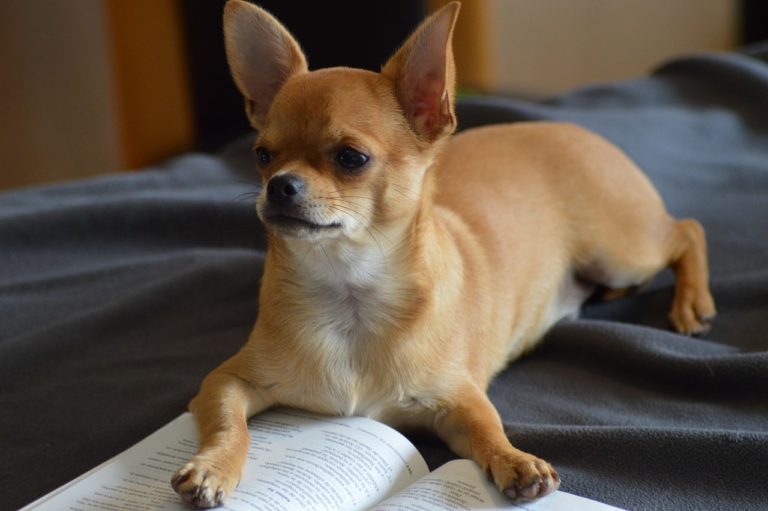
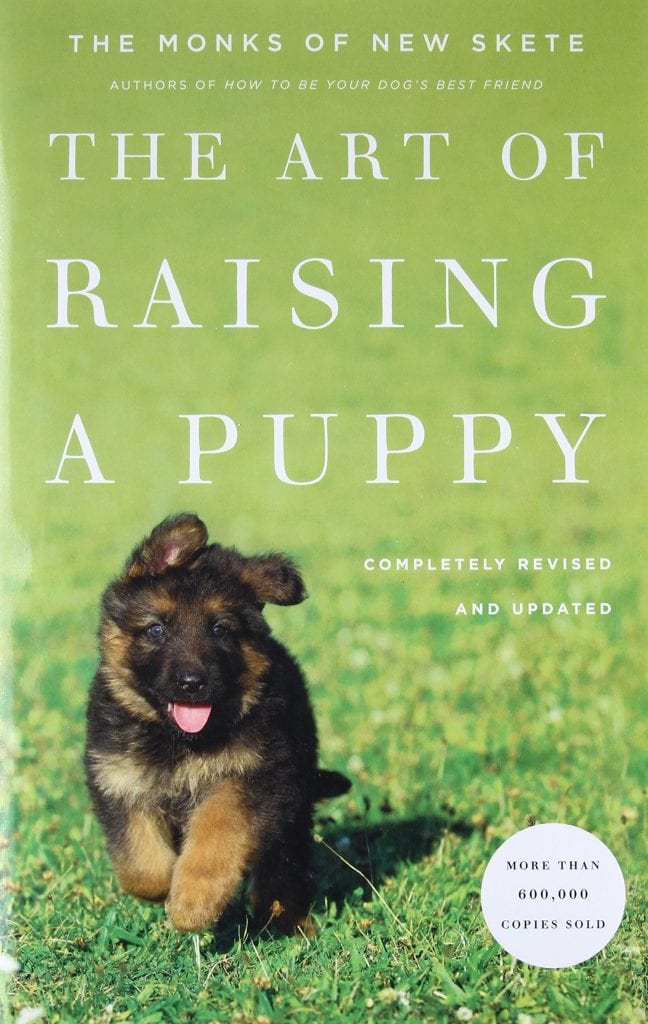
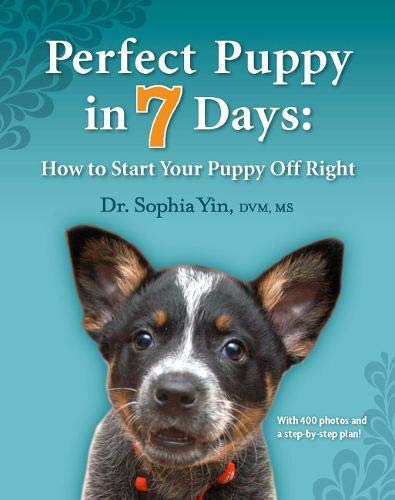
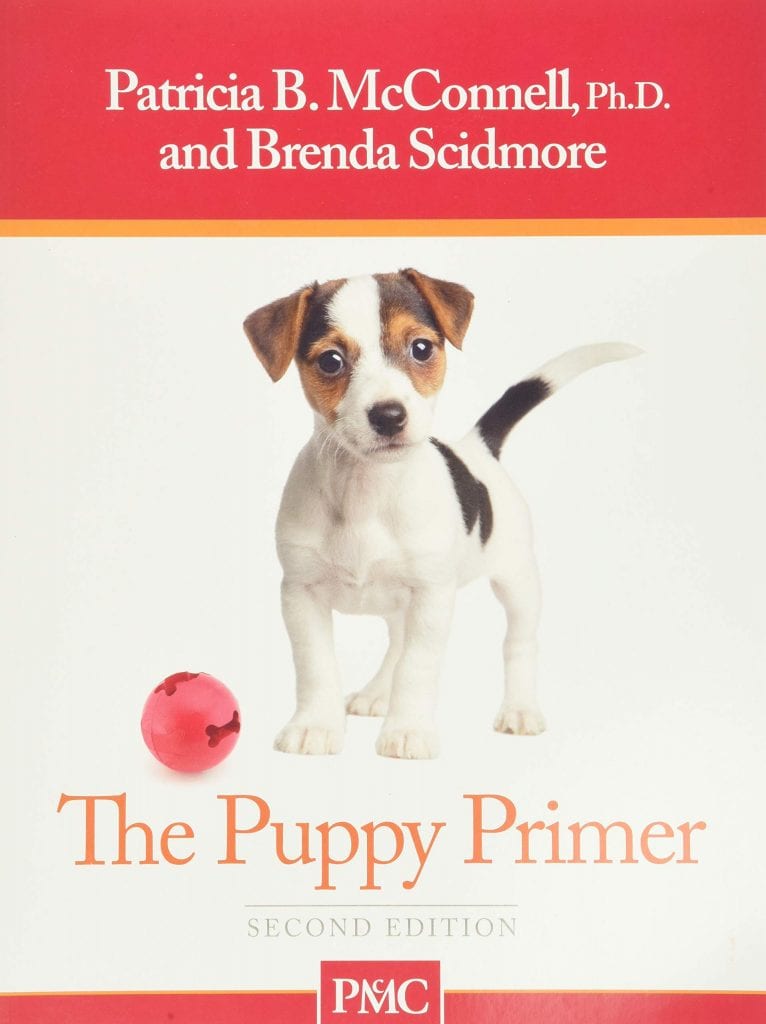
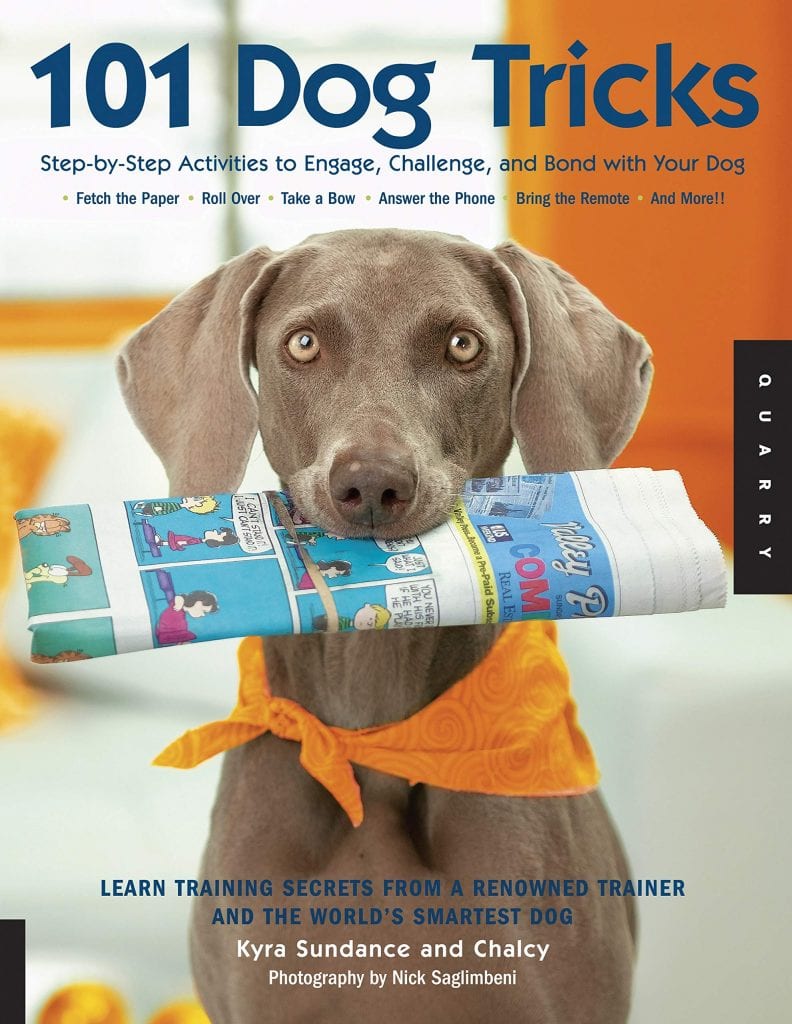
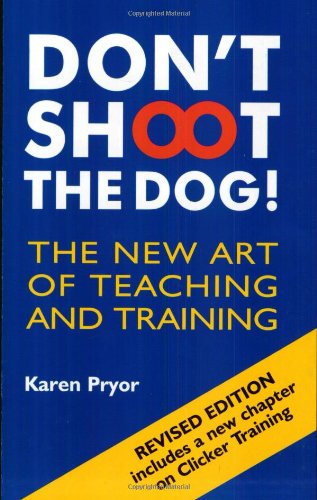
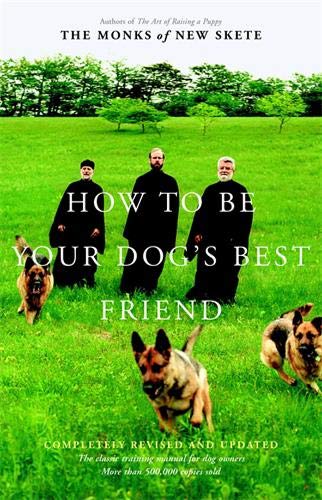
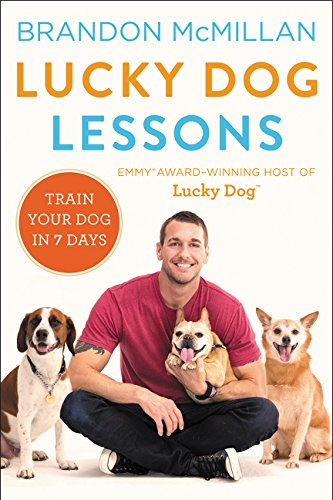
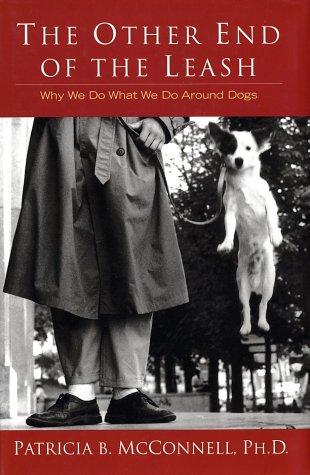
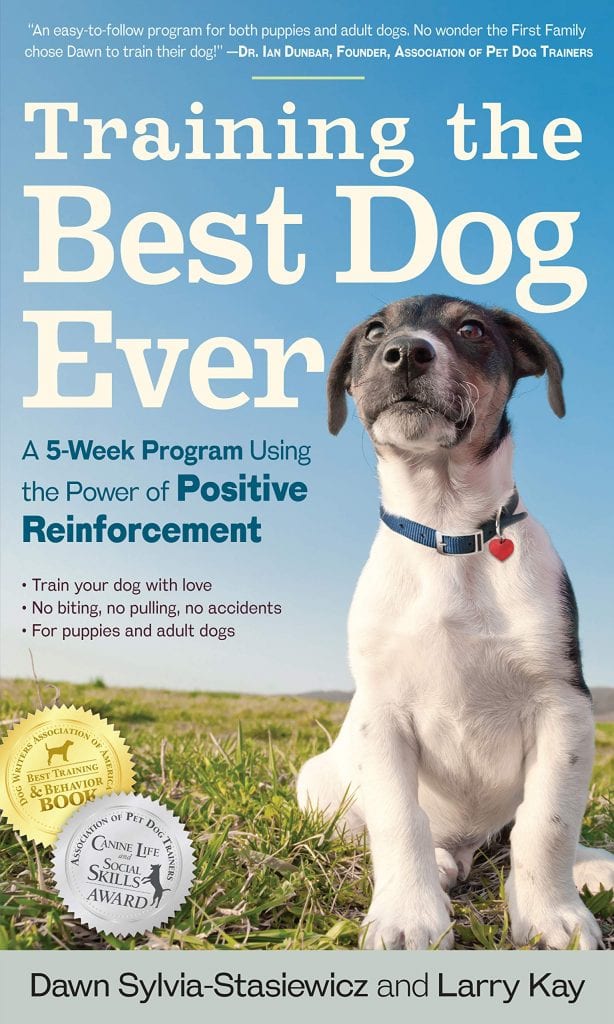
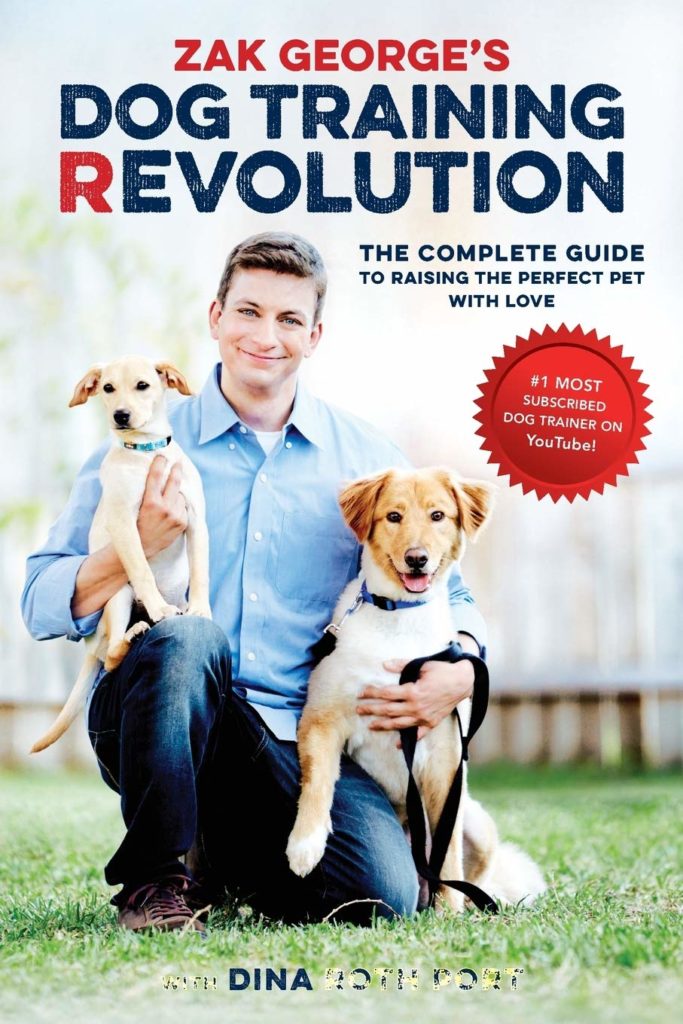

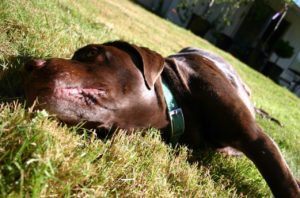


No comment yet, add your voice below!